
Desmos Activity that challenges students to name the transformation and express it in function notation; requires technology.
- Subject:
- Mathematics
- Material Type:
- Interactive
- Provider:
- Desmos
- Date Added:
- 05/07/2018

Desmos Activity that challenges students to name the transformation and express it in function notation; requires technology.

The goal of this task is to solve an equation involving a radical and then verify whether the solutions of the resulting quadratic equation are relevant. In this particular case, one solution is relevant and the other is not because it occurs after the race is over.

Khan video that completes x^2-44x into a perfect square.

This video shows a worked example of solving a quadratic, with a leading coefficient not equal to, by using completing the square.

This video shows how to determine whether the following expressions are rational or irrational: 9 + sqrt(45), sqrt(45)/(3*sqrt(5)), and 3*sqrt(9).

This video determines whether expressions with unknown rational/irrational numbers are rational or irrational.

Khan video that rewrites x^2+16x+9 as (x+8)^2-55 by completing the square.
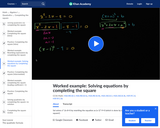
This video shows an example of how to solve a quadratic using completing the square.
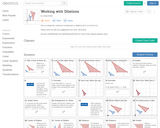
Desmos activity discussing scale factor in relation to dilations; requires technology.

Practice worksheet using triangle sum theorem and exterior angle theorem.
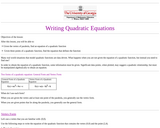
After this lesson, you will be able to:
Given the vertex of parabola, find an equation of a quadratic function
Given three points of a quadratic function, find the equation that defines the function
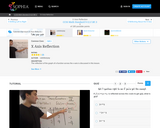
The reflection of the graph of a function across the x-axis is discussed in this lesson.

The reflection of the graph of a function across the y-axis is discussed in this lesson.
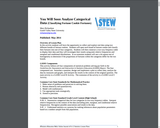
Students will have the opportunity to collect and explore real data using two different brands of fortune cookies. Students will open each brand of fortune cookie and classify their fortunes into one of four categories. Students will then construct a two-way frequency table to display their data and they will investigate their results using joint relative frequencies and marginal and conditional distributions.

This task is part of a series of tasks that lead students to understand and apply the zero product property to solving quadratic equations. The emphasis is on using the structure of a factorable expression to help find its solutions (rather than memorizing steps without understanding).
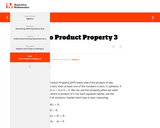
This task is part of a series of tasks that lead students to understand and apply the zero product property to solving quadratic equations. The emphasis is on using the structure of a factorable expression to help find its solutions (rather than memorizing steps without understanding).
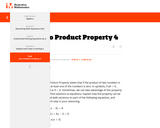
This task is the fourth in a series of tasks that leads students to understand The Zero Product Property (ZPP) and apply it to solving quadratic equations. The emphasis is on using the structure of a factorable expression to justify the solution method (rather than memorizing steps without understanding).

The formal definition of i is i^2=-1 and not sqrt(-1)=i, and there's a good reason for this (although it's a bit technical).